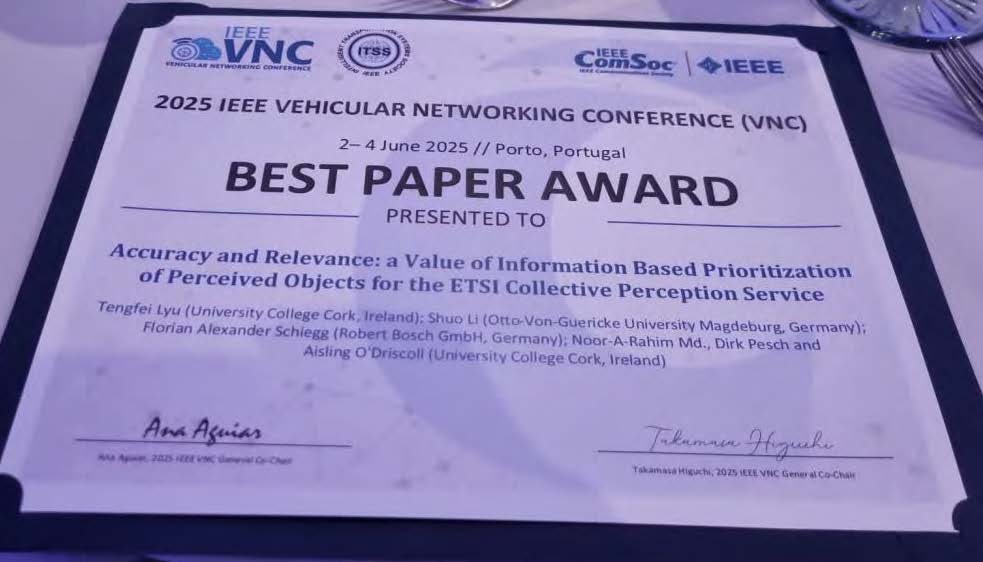News and Vacancies
2025 IEEE VNC Best Paper Award

Congratulations to Tengfei Lyu who was awarded the Best Paper Award at the 2025 IEEE Vehicular Networking Conference (VNC).
Title of Paper: Accuracy and Relevance: a Value of Information Based Prioritization of Perceived Objects for the ETSI Collective Perception Service
Supervisors: Dr Aisling, O’Driscoll, Professor Dirk Pesch and Dr Noor-A-Rahim Md
The paper was published in the 2025 IEEE Vehicular Networking Conference (VNC) in Porto, Portugal, June 2025
Abstract: The Collective Perception Service (CPS) enables connected vehicles and infrastructure to share real-time sensor data to augment situational awareness, including the positions, speeds, and attributes of detected objects. While such updates provide valuable information, frequent and potentially redundant transmissions can result in saturation of the vehicular communication medium. To alleviate this, the European Telecommunications Standards Institute (ETSI) specifies a set of object inclusion rules governing Collective Perception Message (CPM) generation, which are largely based on dynamics or update frequency, as well as many additional update rate control (URC) measures that further suppress object reports. Due to the origins of these rules, largely based on cooperative awareness messages, this has resulted in a series of overly complex mitigation measures to limit the channel occupancy. As a result, there is a need to streamline CPM object inclusion rules into a singular Value of Information (VoI) based function that should, at the very least, expressly consider a) the perception accuracy of the information being shared and b) the importance of the data to the nearby Intelligent Transport System Stations (ITS-S'). It should rank and prioritise objects in a CPM in the presence of noisy sensor readings under diverse channel conditions. Based on discussions with the ETSI Collective Perception Service (TS 103 324) working group, this paper proposes the requirements and range for such a function and discusses the object states that would meet these requirements. It proposes and evaluates two possible VoI function implementations and shows that objects are more accurately ranked and prioritised than with current CPM rules. This informs more detailed VoI-based object inclusion function implementations in the future.


